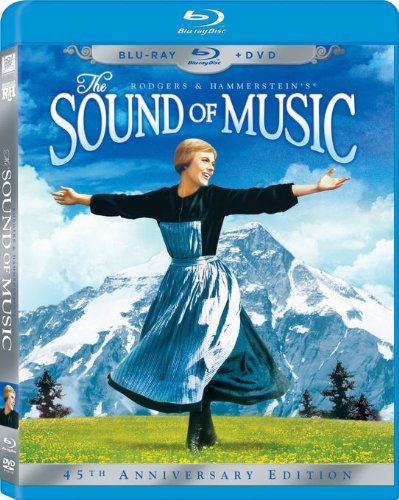![61mD-FsRKIL._SCLZZZZZZZ_[1]](https://www.dadnabbit.com/wp-content/uploads/2010/12/61mD-FsRKIL._SCLZZZZZZZ_1.jpg) Fantasia/Fantasia 2000 (Disney, 2010)
Fantasia/Fantasia 2000 (Disney, 2010)
Even if you’re the type of person who thinks of Disney as a soulless princess factory, you’d be hard-pressed to deny that 1940’s Fantasia is one of the most ambitious animated films of all time — and its sequel-ish thing, Fantasia 2000, was a gutsy-albeit-neutered attempt to recapture the freewheeling, untrammeled creativity that once defined the studio. Arguably Disney’s all-time creative peak, Fantasia now comes to Blu-ray with a 7.1 soundtrack — and Fantasia 2000 in the bargain. With Disney’s spotless hi-def record and the classic source material going for it, it’s got to be a must-own, right?
Synopsis: Fantasia, Walt Disney’s animated masterpiece of the 1940s, grew from a short-subject cartoon picturization of the Paul Dukas musical piece The Sorcerer’s Apprentice. Mickey Mouse starred in this eight-minute effort, while the orchestra was under the direction of Leopold Stokowski. Disney and Stokowski eventually decided that the notion of marrying classical music with animation was too good to confine to a mere short subject; thus the notion was expanded into a two-hour feature, incorporating seven musical selections and a bridging narration by music critic Deems Taylor.
The first piece, Bach’s “Toccata and Fugue in D Minor,” was used to underscore a series of abstract images. The next selection, Tschiakovsky’s “Nutcracker Suite,” is performed by dancing wood-sprites, mushrooms, flowers, goldfish, thistles, milkweeds and frost fairies. The Mickey Mouse version of “Sorcerer’s Apprentice” is next, followed by Stravinsky’s “Rite of Spring,” which serves as leitmotif for the story of the creation of the world, replete with dinosaurs and volcanoes.
After a brief jam session involving the live-action musicians comes Beethoven’s “Pastorale Symphony,” enacted against a Greek-mythology tapestry by centaurs, unicorns, cupids and a besotted Bacchus. Ponchielli’s “Dance of the Hours” is performed by a Corps de Ballet consisting of hippos, ostriches and alligators. The program comes to a conclusion with a fearsome visualization of Mussorgsky’s “Night on Bald Mountain,” dominated by the black god Tchernobog (referred to in the pencil tests as “Yensid,” which is guess-what spelled backwards); this study of the “sacred and profane” segues into a reverent rendition of Schubert’s “Ave Maria.” Continue reading →
![515h4hIEvLL._SCLZZZZZZZ_[1]](https://www.dadnabbit.com/wp-content/uploads/2011/01/515h4hIEvLL._SCLZZZZZZZ_1.jpg) Alice in Wonderland: 60th Anniversary Edition (Disney, 2011)
Alice in Wonderland: 60th Anniversary Edition (Disney, 2011)![61mD-FsRKIL._SCLZZZZZZZ_[1]](https://www.dadnabbit.com/wp-content/uploads/2010/12/61mD-FsRKIL._SCLZZZZZZZ_1.jpg)
